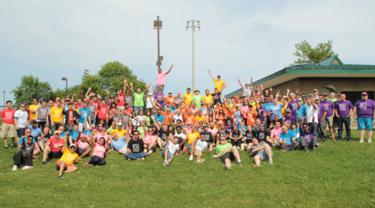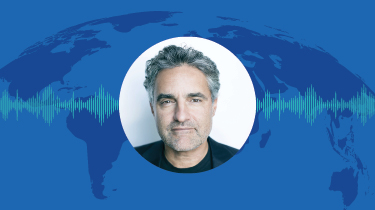There’s a story that circulates around SOTI about the origin of the company’s name. Some more mischievous employees claim founder Carl Rodrigues named it after Indian film actress Anaika Soti because he had a crush on her.
Rather, the company’s name, which originally stood for Soft Object Technologies Inc., actually relates to its humble beginnings, when Rodrigues was a programmer, working in his basement on contracts for Nortel. Nortel insisted he incorporate to be a consultant and he picked his name, which refers to what he was doing at the time, quickly.
Today, the company, which now sells different products and services, has 700 employees in 22 countries and offices across the globe, including a headquarters in Toronto, two research offices in Waterloo and sales offices in England, Sweden, India and Australia.
Soon after incorporating in 1995, Rodrigues wanted to do something completely different and, in 2001, set out to “build something cool.” That something is Enterprise Mobility Management (EMM) for mobile businesses.
“We create technology to allow companies to create applications really quickly,” Rodrigues said. “It’s app creation for the masses. We have software for management and security for mobile and computing devices and also business intelligence and analysis and we have technology to connect external devices so you can understand what’s happening in the field back at the office. It’s core technology and it’s integrated into an ecosystem.”
The company started with EMM and then added the other pieces so that today, Rodrigues says, they’re in the business of helping mission-critical businesses that are built on technology run smoothly.
“It’s that nurse in the hospital using a tablet to deliver medication to a patient,” he said. “If she can’t scan his bracelet, she can’t deliver the medication. It’s emergency services. Wherever technology is used to deliver mission-critical services, our products are useful.”
For SOTI, exporting to a market 10 times as big as Canada’s was the objective from Day 1. After the U.S., Rodrigues moved to Western Europe. Today, 96 per cent of SOTI’s revenues come from outside Canada, though Rodrigues says Canadian sales are ramping up as well.
What was your first export sale?
Our first sale ever was to the U.S., where most have been, but our first big sale was to the U.K. A very large retail outlet there found out about the product and called the office in my basement. We sold them 20,000 devices.
How did that first export opportunity arise?
I think it was Handango, a Texas-based online retailer. At the time, their website gave me access to the world.
When it comes to exports, what do you know now that you wish you knew then?
One thing is the differences in marketing to different parts of the world. Even the U.S. can be a slightly different marketing exercise. Let’s say you want to target the retail vertical in the U.S., you need to be at certain trade shows, such as NRF [National Retail Federation.] It’s one of those big-bang opportunities.
Also, online forums are a free way to broadcast your message. And if you’re talking about foreign markets, it’s important to understand different cultures. If you don’t study up on the cultures, you risk being perceived as rude. In foreign markets, people on the ground with access to local media will help you fine-tune your message. Find the right people and have them join the team.
What is the #1 thing new SMEs need to know about export and trade?
Understand the nuance of the market you’re trying to compete in. Many make that mistake. In North America, we do business without meeting personally. That’s not so in other markets. Also, don’t assume that if you do everything in English, they’ll understand you.
How has exporting changed the way you market/sell your products/services in Canada?
I didn’t think it was important to create a brand in Canada, but it turns out it was. There’s a clear link in communication between Canada and the U.S. A lot of U.S. media sees stories they like here and picks them up. You also want to create a good relationship with the Canadian government. They can help to market our company to the world.
Can you share the best lesson learned from a bad exporting experience?
We’ve had little things, but no really bad experiences. In business, it’s very important to watch for smoke signals from the beginning. When we’re going into a new region, we put in a little bit of investment and keep fine-tuning until we find the right people and have success and then build on that.
What is the one characteristic that you believe every exporter should possess?
Be open-minded and willing to learn. You need to be dedicated, persistent and have a long-term vision.





